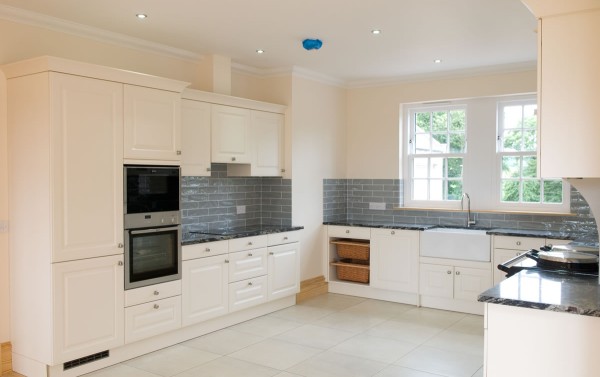The importance of ventilation in your self-build
It’s hit the headlines recently - ventilation is well and truly under the spotlight with links to the spread of coronavirus.
A recent paper for the government’s Scientific Advisory Group for Emergencies (Sage), highlighted concerns and evidence that suggests insufficient airflow could increase the risk of transmission from tiny airborne particles known as aerosols.
But poorly ventilated indoor spaces are nothing new.
It’s becoming evident that maintaining good levels of ventilation remains the key focus even in colder weather conditions, while minimising occupant discomfort due to draughts and lower indoor temperatures. As a self-builder it’s likely you’re on a quest to create the most comfortable home possible. Many self-build homes these days feature the best ventilation to manage internal air quality and avoid condensation problems.
So, what do you need to think about when it comes to your self-build?
1/ Adopt a whole-building approach
The National Institute for Health and Care Excellence (NICE) has developed guidelines for indoor air quality in UK homes. Their guidance advises builders and developers to adopt a whole-building approach to heating and ventilation, balancing indoor air quality with standards for energy use. This can be achieved through the materials and products you use from the insulation, windows through to ventilation systems.
2/ Consider installing a heating and ventilation system
One of the NICE recommendations include installing permanent and effective ventilation.
Installed correctly, and as part of a whole house, fabric-first approach, a Mechanical Ventilation Heat Recovery (MVHR) system can help to tackle the effects of indoor air pollution. Trickle vents or extractor fans are being replaced by these kind of systems, which can provide excellent indoor air quality and also deliver heat throughout the home.
Why do you need an MVHR system?
Find out more here.

It simply provides constant fresh filtered air into a building while retaining most of the energy that has already been used in heating the building. This kind of system can extract and recycle any warmth in the outgoing air by transferring it into the new supply - optimising the climate in your home.
One of the main benefits of this system is improved air quality and the removal of allergens, such as pollen. By controlling the humidity levels you’ll also keep mould and fungus in check.
So how do you choose the right supplier for your MVHR system?
Find out more here.

Before you push ahead with an MVHR system you must ensure your home is as airtight as possible for the system to work effectively.
Asking the right questions will help you to source a suitable ventilation system for your home. You must always ensure heating and ventilation is installed and commissioned in accordance with the manufacturer’s instructions and meets building regulation requirements.
3/ Specify the right building materials and products
To ensure effective ventilation in your self-build project you need to take a fabric-first approach - it’s all about choosing the right materials from the start of your project.
There’s no one size fits all approach to ensuring indoor air quality – a range of elements need to be taken into account. For instance: is the building constructed with products that emit the lowest levels of volatile organic compounds (VOCs) possible?
Do the products and systems complement the ventilation systems in place? Could products that help purify the air by removing certain VOCs be used? All of these aspects impact on indoor air quality and contribute to creating a healthier, more comfortable, environment.
When it comes to specifying certain materials and products it’s best to consider specifying materials and products that emit low levels of formaldehyde and volatile organic compounds (VOCs). Builders and developers should use materials as specified or substitute with products of the same or lower emission levels and you should ensure materials and products comply with building regulations, design specifications and the manufacturer’s guidance.
What kind of materials could you use?
- Insulation, dry lining, facade, wall or floor covering, membranes and high performance windows and doors providing superior airtightness.
- Why not design ventilation to reduce exposure to outdoor air pollution, for example, with windows that face away from busy roads? Or consider including provision for removing indoor air pollutants in designs, for example, windows that open and extractor fans that extract to outside.
- Products, such as British Gypsum plaster and plasterboard with ACTIVair technology, can help to decompose certain Volatile Organic Compounds (VOCs) such as formaldehyde, which lowers the risk of them entering the air.
- Low-dust screeds and adhesives can help to improve user-comfort during installation.

